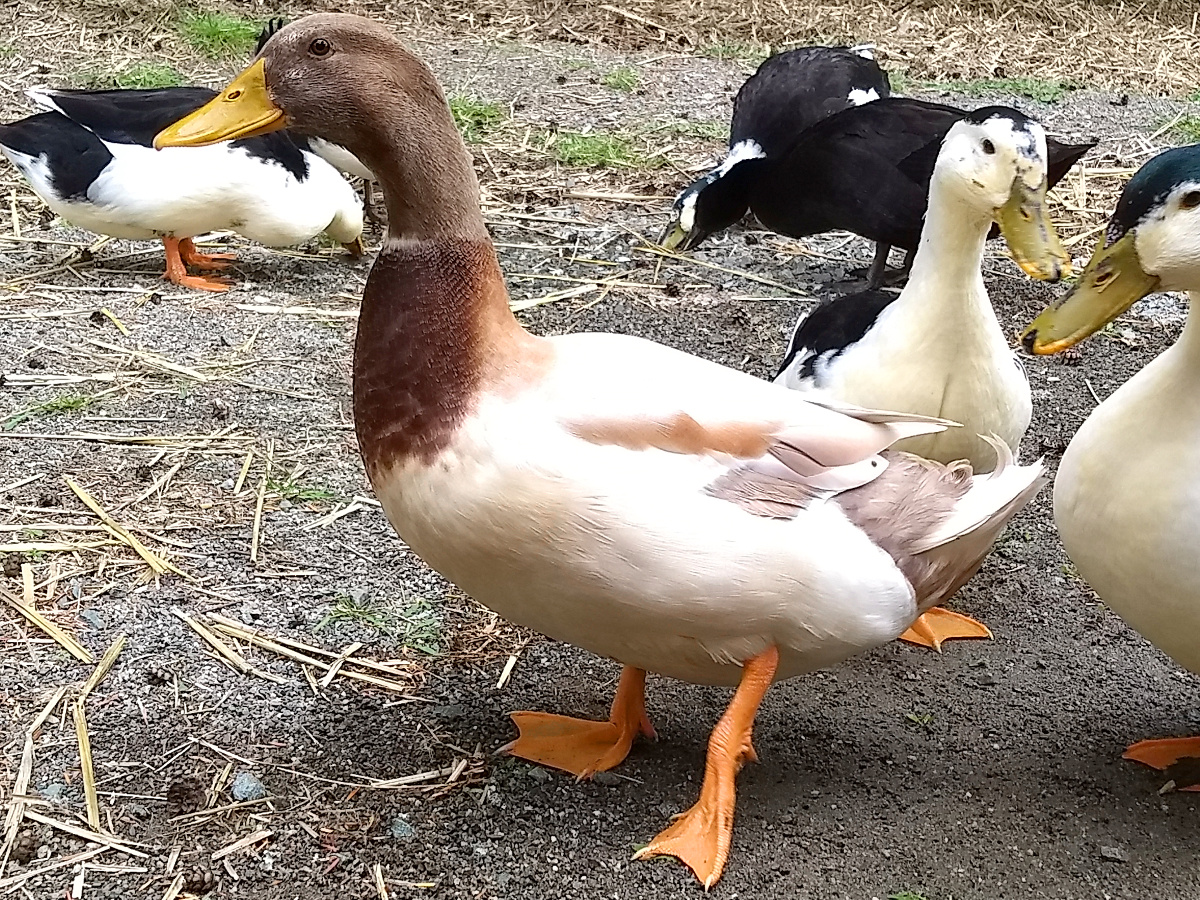How to tell drakes from hens
One of the biggest questions first-time duck owners have is how to tell whether their duck is male or female. How can you tell whether your cute little quacker is going to provide you with eggs or not?
The good news is that it’s actually extremely easy to tell the gender of an adult duck!
There are three main clues: the tail curl, the voice, and (sometimes) the coloring.
SEXING BY TAIL CURL
A mature drake will often display one or more curled feathers right at the top of his tail. Drakes usually develop this feather when they get their adult plumage, around 8-12 weeks of age.
This handsome brown drake began to develop his tail curl at the tender age of 6 weeks…earning him the name Manly.
Freckles poses in the sunshine to show off both his tail curl and his great color!
Manly (front), Tuftie (middle) and Freckles (back-left) show off their tail curls.
This pretty Saxony hen lacks a tail curl
But be aware - even an adult drake may not always have a curl! Many drakes will lose their tailfeathers during the fall molt, and may not re-grow them until spring.
Sometimes a hen will also grow a curled drake feather. One of our Saxony hens grows a small curled tailfeather during the summer, but still lays eggs. She’s an older hen, and presumably a hormone imbalance causes the tail curl.
Very rarely, a drake will just fail to develop a tail curl at all. One of our Magpie drakes, Sneaker, was emphatically male…but never got his drake curl.
SEXING BY VOICE
The most reliable way to determine the sex of your duck is to listen to their voice. Hens are the loud ones - they make loud quacking, honking, or ‘buckbuckbuck’ noises.
Drakes, on the other hand, make quiet raspy sounds, like they’re talking around a mouthful of cotton balls, have a bad case of laryngitis, or are imitating a frog.
Listen closely, and you’ll hear a few raspy noises from this flock of bachelors.
Sexing by voice only works in teenage or adult ducks. since duck voices change as they hit maturity. All ducklings peep at first, and their voices begin to change at about 6-8 weeks of age. As with humans, it’s not always a smooth process, and you may hear some hilarious squeaking while their voices begin to mature. It’s during this phase that hens start getting louder, while the drakes will begin saying less and less.
With their quieter voices and a much smaller appetite than a laying hen, drakes make excellent pets for anyone interested in a companion or slug-and-dandelion control rather than an egg producer.
SEXING BY COLOR
Finally, in a few breeds, you can sex your ducks by color. The Welsh Harlequin and some other breeds will have noticeable differences between adult male and female plumage.
Welsh Harlequin hen
Welsh Harlequin drake
In general, if a breed does have any difference in coloring due to sex, the male will have a darker head and/or more obvious iridescence on his head and tail.
Many breeds, however, will show little to no difference at all in their coloring. Cayugas, Magpies, Anconas, Swedish, and Pekins have very similar markings, whatever their sex.
Sometimes you can even use coloring to tell a male from a female when they’re still babies. A few breeds, including the gold color phase of the Welsh Harlequin, will have slightly different colored bills as day-old ducklings. This takes a bit of a trained eye and a knowledge of duck genetics, however, since not every combination of parent ducks will produce auto-sexing offspring.
So when in doubt, listen for the voice to figure out if you have a male or female duck on your hands. A quack means a hen, and a raspy wheeze means a drake!








